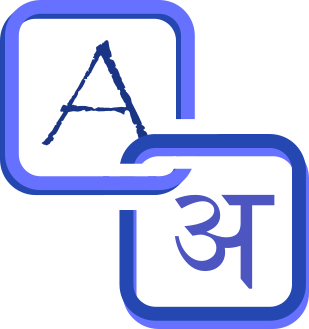[fsn_row][fsn_column width=”12″][fsn_text]
Hindi is one of the most widely spoken languages in the world. India is a very diverse country. There are 29 states where over 22 official languages are spoken. Each State has its own uniqueness in terms of food, culture, dresses, customs, traditions, festivals, expressions, language and more. Even the division of states in India is based on cultural and lingual proximities. People of a state predominantly speak the same language. Hindi or English is commonly used for communication. Most people are multilingual.
The Regional Dialects of Hindi
Although Hindi is spoken and understood in most states, the dialect, pronunciation, sentence formation, choice of words is significantly different. And that is evident in the English to Hindi translation work done by the many translators of non-Hindi speaking states. Needless to say, their English to Hindi translation reflects their regional dialects, expressions, sentence formation and choice of words. And this may not be the academic Hindi that I believe, translators should use and translations guidelines should be based on. This is missing today. And the dialects are so evident in the translations and subtitles I get to see or review.
The Foreign Influence on Hindi – “Nuktas”
This is further complicated by the influence of foreign languages that came with foreign invaders in the past. “Nuktas” were introduced in Hindi to accommodate the influence of foreign languages like Persian, Arabic, and nowadays even English. So what does this all mean for the translators or translation agencies and the quality & accuracy of translations?
The Issue
“Nukta” is one of those things where most translators, even from native Hindi speaking states, commit a lot of mistakes on. Specific reference to it’s proper use are missing in almost all English to Hindi translation and subtitling guidelines. The influence of regional dialects is very pronounced. It is very evident in the work of translators and reviewers that are not vetted for their academic quality or regional dialect neutrality. This leads to major inconsistencies and errors in subtitles.
Prudence must be exercised when using the “Nukta”. Many times, it is very important while subtitling a video from English to Hindi. Translators should avoid creating Urdu words or accents where they do not exist by adding the “Nukta”.
One of the three things that happens as a result of inaccurate use of “Nuktas
- Inaccurate meanings
- Use of totally meaningless words
- Completely different meanings
Some examples
Let me share some example of each with you :
For example, सजा and सज़ा are 2 words that have totally different meanings. They might seem the same word, but the latter has the “Nukta” below and that makes a totally different meaning and a different word. The first one means to decorate (सजा), while the latter(सज़ा) stands for punish. And such mistakes are so common to find in the translation works I review.
Here is another similar example with 2 totally different meanings. राज (read as RAAJ) and राज़ (read as RAAZ). The first राज stands for “a kingdom”, while the second one राज़ with the “Nukta” means “a secret”. And there are many more such words that make a totally different meaning.
There is another very common occurrence. सफल (read as SAPHAL) and सफ़ल (read as SAFAL). The word सफल stands for स(with) फल(fruit) meaning something that was successful, rewarded with success. Whereas, if you add the “Nukta” to फ, it becomes सफ़ल which is really no such a word in Hindi and is totally meaningless to someone who has an eye for detail.
Let’s look at these two words, जरा (read as JARAA) and ज़रा (read as ZARAA). Here the second word (ज़रा) means “a little” and the first word means “old age”. Imagine, when the context of translation is an old age (जरा) or senility and you put in the “Nukta” for whatever reason, the meaning is completely different and incorrect if not offensive. And you will find this is most translation works you will come across.
Missing in the Subtitling Guidelines
And there are rules in the Hindi grammar that provide guidance on the use of “Nuktas”. I feel it is better to stick with “Nukta” only for ड, ढ, फ, ज, where you are confident, especially where they are loan words coming from foreign languages. It is best for translators to check the etymology and the dictionary for such words if they are not confident about it.
Interestingly, I have found these nuances missing in the English to Hindi Translation guidelines provided by translation agencies. And it would be very helpful if the agencies could incorporate these in their guidelines and emphasize such care. It is important that we use academic Hindi for translations rather than street-Hindi, I feel.
[/fsn_text][/fsn_column][/fsn_row]
